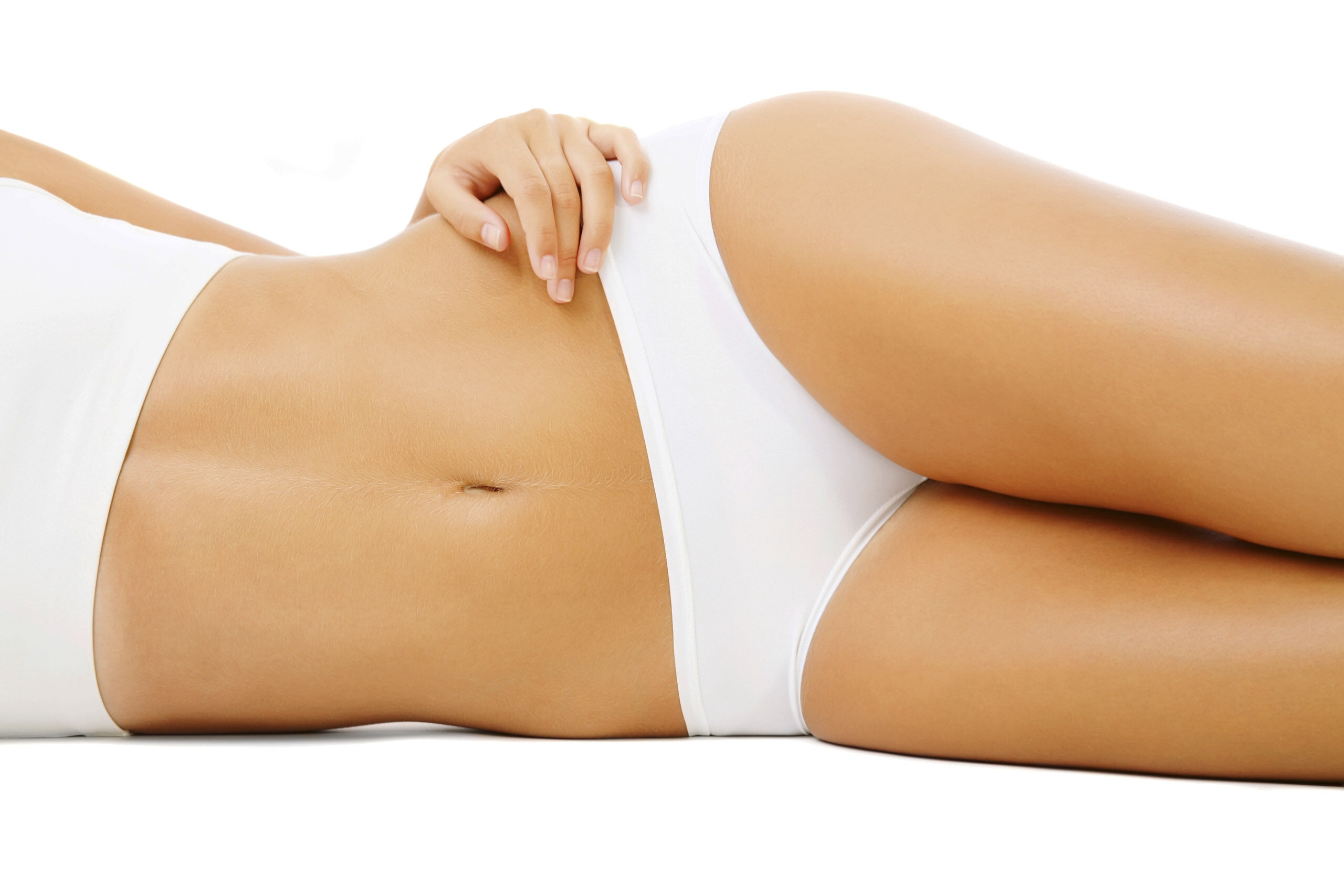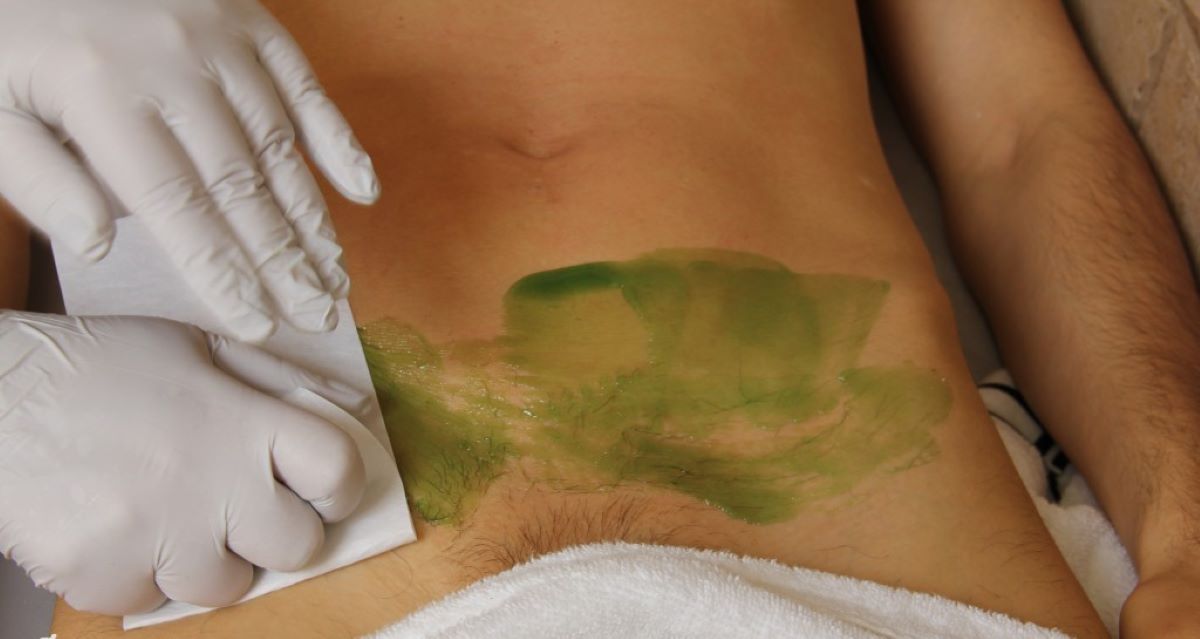Home>Women's Underwear>Bikinis>What Is A Bikini Wax And How Is It Performed


Bikinis
What Is A Bikini Wax And How Is It Performed
Modified: September 23, 2023
Find out what exactly is involved in a bikini wax and why it includes waxing the bikini area. Learn everything you need to know about getting rid of unwanted hair in the bikini region.
(Many of the links in this article redirect to a specific reviewed product. Your purchase of these products through affiliate links helps to generate commission for Under-tec.com, at no extra cost. Learn more)
Table of Contents
Introduction
When it comes to grooming and keeping up with personal hygiene, many people opt for different methods. One popular choice among individuals looking for a hair removal solution is a bikini wax. Whether you’re gearing up for a vacation or simply prefer a clean and smooth bikini area, a bikini wax can provide long-lasting results. But have you ever wondered what exactly is involved in a bikini wax and why wax is used? In this article, we’ll explore the world of bikini waxes and delve into the role of wax in achieving that desired smoothness.
A bikini wax is a cosmetic procedure that involves the removal of hair from the bikini area using a special wax. It is typically done by trained professionals at salons or spas, although some individuals may opt for at-home waxing kits. The procedure aims to remove hair from the bikini line, leaving the skin smooth and hair-free for several weeks.
The waxing process involves applying warm or hot wax to the skin in the desired areas, allowing it to harden, and then quickly pulling it off, removing the hair from the follicles. Waxing is considered an effective hair removal method as it removes hair from the root, resulting in slower and finer regrowth compared to shaving or using hair removal creams.
Different types of wax can be used in a bikini wax, each with its unique properties and benefits. Some common types include strip wax and hard wax. Strip wax is typically applied using a thin layer of wax that is covered with a cloth strip and then removed by pulling the strip in the opposite direction of hair growth. Hard wax, on the other hand, is applied directly to the skin and allowed to harden before being lifted off without the need for strips.
Now that we have a basic understanding of what a bikini wax is and how it is performed, let’s explore the role of wax in the process. Wax plays a crucial role in ensuring a successful bikini wax by effectively gripping the hair and removing it from the root.
What is a Bikini Wax?
A bikini wax is a popular method of hair removal that focuses on removing hair from the bikini area, including the bikini line, pubic area, and sometimes the buttocks. This procedure is commonly done by trained professionals at salons or spas, although there are also at-home waxing kits available for those who prefer to do it themselves.
The primary goal of a bikini wax is to achieve a clean and smooth bikini area by removing unwanted hair. It is a cosmetic procedure that has become increasingly popular among individuals who want to maintain personal hygiene, prepare for special occasions, or simply prefer the aesthetic appeal of a hair-free bikini area.
During a bikini wax, warm or hot wax is applied to the skin in the desired areas using a spatula, brush, or roller. The wax is then left to cool and harden, allowing it to adhere to the hair and the skin. Once the wax has hardened, it is quickly removed by pulling it off in the opposite direction of hair growth. This pulling motion helps to uproot the hair from its follicles, resulting in a smoother finish.
The process of waxing the bikini area can vary depending on personal preferences and the desired level of hair removal. Some individuals may opt for a basic bikini wax, which involves removing hair from the bikini line to ensure a clean and tidy appearance when wearing swimsuits or underwear. Others may choose to go for a more extensive waxing option, such as a Brazilian wax, which involves the removal of most or all hair from the pubic area, leaving the skin completely smooth.
Bikini waxes offer several advantages over other hair removal methods. Unlike shaving, which only removes hair at the surface level, waxing removes hair from the root. This means that the results of a bikini wax typically last longer, with regrowth taking several weeks to occur. Additionally, regular waxing can lead to finer and sparser hair regrowth, making the hair easier to manage over time.
While bikini waxes are generally safe and effective, it is important to note that they may cause some discomfort or mild pain during the procedure. However, the level of discomfort varies from person to person, and it can be minimized with proper techniques and the use of soothing lotions or creams post-wax.
In the following sections, we will explore the waxing process in more detail, discuss different types of wax used in bikini waxes, and highlight the benefits and potential risks associated with this hair removal method.
Understanding the Waxing Process
The waxing process is a key component of a bikini wax and plays a crucial role in achieving smooth and hair-free results. To better grasp this process, let’s delve deeper into the steps involved in performing a bikini wax.
1. Preparation: Before beginning the waxing process, the waxing professional will assess the client’s needs and preferences. They may ask about the desired level of hair removal, any allergies or skin sensitivities, and whether the client has any specific concerns or questions. This allows for a tailored approach to ensure a comfortable and satisfactory experience.
2. Cleansing: Once the client is ready, the bikini area will be thoroughly cleansed to remove any oils, lotions, or debris that could interfere with the waxing process. This step helps to ensure better adhesion of the wax to the hair and skin, allowing for optimal results.
3. Application of wax: The waxing professional will then apply the chosen type of wax to the desired areas using a spatula, brush, or roller. The wax is usually heated to a comfortable temperature to ensure it spreads smoothly and evenly on the skin. It is important to note that different types of wax require slightly different application techniques.
4. Hardening of the wax: Once the wax is applied, it is left to cool and harden. This allows the wax to adhere firmly to both the hair and the skin, ensuring effective hair removal. The hardening process typically takes a few seconds to a couple of minutes, depending on the type of wax used.
5. Removal of wax: After the wax has hardened, it is time for its removal. The waxing professional will quickly and firmly pull the wax off in the opposite direction of hair growth. This motion helps to uproot the hair from its follicles, resulting in a cleaner and smoother finish. The pulling off of the wax can cause a mild sensation of discomfort, which varies from person to person. However, it is usually a quick process.
6. Finishing touches: Once the wax is removed, any stray hairs or remnants of wax are carefully tidied up. The waxing professional may use tweezers to pluck out any stubborn hairs or apply a soothing lotion to calm and moisturize the skin.
It is essential to note that the waxing process requires skill and experience to ensure optimal results and minimize potential side effects. Hence, it is advisable to seek the services of a trained professional who can perform a bikini wax safely and effectively.
In the next section, we will explore the different types of wax used in bikini waxes and discuss their respective advantages and disadvantages.
Different Types of Wax Used
When it comes to bikini waxes, various types of wax can be used to achieve hair removal. Each type of wax has its own characteristics, advantages, and specific applications. Here are some commonly used types of wax in the bikini waxing process:
1. Strip Wax: Also known as soft wax, strip wax is one of the most popular types of wax used for bikini waxes. It typically consists of a thin layer of wax that is applied to the desired areas using a spatula or roller. A cloth or paper strip is then pressed onto the wax and quickly pulled off, removing the hair along with it. Strip wax is efficient and suitable for large areas such as the bikini line and buttocks. It is known for its ability to adhere to both coarse and fine hairs.
2. Hard Wax: Hard wax is another commonly used type of wax in bikini waxing. Unlike strip wax, hard wax is applied directly to the skin in a thicker layer. As it cools and hardens, it grips the hair firmly, allowing for easy removal without the need for strips. It is often preferred for more sensitive areas like the pubic region as it adheres only to the hair, reducing the risk of skin irritation. Hard wax is known for its effectiveness in removing shorter hairs and its gentle application.
3. Wax Beans: Wax beans are a type of hard wax that comes in small, pellet-like beads. They usually need to be melted in a wax warmer before application. Wax beans offer convenience and flexibility, as they allow for precise portioning and can be melted and reused as needed. They are a popular choice for at-home waxing kits, providing users with salon-like results in the comfort of their own homes.
4. Sugaring Wax: Sugaring wax, also referred to as sugar wax, is an alternative to traditional waxing methods. It is made from natural ingredients such as sugar, lemon juice, and water. Sugaring wax is applied to the skin and removed in the same manner as traditional wax, with the difference being its composition. Sugaring wax is considered gentler on the skin and is often suitable for individuals with sensitive skin or allergies.
5. Hybrid Wax: Hybrid wax is a newer type of wax that combines the benefits of both strip wax and hard wax. It is a flexible wax that can be applied in a thin layer and then removed using a strip, similar to strip wax. It is known for its excellent hair removal capabilities and its ability to adhere to shorter hairs. Hybrid wax is a versatile option that can be used on various areas of the body, including the bikini area.
It is important to note that different waxing professionals may have their preferences when it comes to the types of wax used in bikini waxes. They may choose a wax type based on the client’s skin and hair type, as well as their own expertise and experience. Consulting with a professional can help determine the most suitable wax for your specific needs.
In the following section, we will discuss the role of wax in a bikini wax and the benefits it provides over other hair removal methods.
The Role of Wax in a Bikini Wax
Wax plays a significant role in achieving an effective and long-lasting bikini wax. It is the primary medium used to remove unwanted hair from the bikini area. Let’s explore the role of wax in detail.
1. Hair Gripping: The main purpose of wax in a bikini wax is to grip and remove the hair from the root. When the warm or hot wax is applied to the skin, it adheres to the hair follicles. As the wax cools and hardens, it forms a strong bond with the hair, allowing for effective hair removal when the wax is pulled off.
2. Hair Removal from the Root: Unlike shaving, which only removes hair at the surface level, waxing removes hair from the root. This ensures a longer-lasting smoothness as it takes time for the hair to regrow and reach the surface of the skin. Additionally, frequent waxing can weaken the hair follicles over time, resulting in thinner and lighter regrowth.
3. Exfoliation: When the wax is pulled off, it also exfoliates the skin, removing dead skin cells and leaving the skin feeling smoother and softer. This exfoliation process helps to improve the overall texture and appearance of the bikini area.
4. Reduction of Ingrown Hairs: Waxing helps reduce the occurrence of ingrown hairs in the bikini area. Ingrown hairs happen when hair grows back and gets trapped beneath the surface of the skin. By removing the hair from the root, waxing minimizes the likelihood of hair getting trapped and reduces the chances of ingrown hairs.
5. Slower Hair Regrowth: Compared to other methods like shaving, waxing slows down the regrowth of hair in the bikini area. With consistent waxing over time, hair regrowth becomes finer and sparser. This means that the time between waxes can be extended, saving both time and effort in the long run.
6. Smooth and Even Results: Waxing provides a smooth and even finish to the bikini area. As the hair is removed from the root and the wax exfoliates the skin, any unevenness, stubble, or rough texture caused by shaving or other hair removal methods is diminished, resulting in a more desirable and uniform appearance.
It is important to note that waxing requires precision and skill to ensure a successful and comfortable experience. Trained professionals are knowledgeable about applying the right amount of wax, removing it at the correct angle, and choosing the appropriate wax type for different skin and hair types. Seeking the services of a professional can help optimize the role of wax in achieving the desired results.
In the next section, we will discuss the benefits of using wax as a hair removal method in the bikini area.
Benefits of Using Wax in a Bikini Wax
Using wax as a hair removal method in the bikini area offers several advantages over other techniques. Let’s explore the benefits of using wax for a bikini wax in detail.
1. Long-Lasting Results: One of the primary benefits of using wax for a bikini wax is the long-lasting results it provides. Unlike shaving or using hair removal creams, which only remove hair at the surface level, waxing removes hair from the root. This means that the results can last for several weeks, with slower and finer regrowth compared to other methods.
2. Smooth and Hair-Free Skin: Waxing leaves the bikini area smooth and hair-free. As the hair is completely removed from the root, the skin remains smooth for an extended period. This makes it an ideal choice for individuals who want to go hair-free for longer durations without the hassle of frequent touch-ups.
3. Thinner and Finer Regrowth: With regular waxing, the regrowth of hair in the bikini area tends to become thinner and finer over time. This is because waxing weakens the hair follicles, resulting in decreased hair density and a softer texture. As a result, the regrowth is less noticeable and easier to manage.
4. Reduced Ingrown Hairs: Ingrown hairs, which occur when hair grows back into the skin, can be a common problem in the bikini area. However, waxing can help reduce the occurrence of ingrown hairs. By removing the hair from the root, waxing allows for smoother regrowth and reduces the chances of hair getting trapped beneath the skin’s surface.
5. Precision and Customization: Waxing offers the advantage of precision and customization. Trained professionals can tailor the waxing process to the individual’s needs and preferences, ensuring a precise and personalized result. Whether you want a basic bikini wax or a more extensive Brazilian wax, waxing provides flexibility in achieving the desired level of hair removal.
6. Exfoliation and Improved Skin Texture: Another benefit of using wax in a bikini wax is the exfoliating effect it has on the skin. When the wax is removed, it also removes dead skin cells and impurities, leaving the skin feeling smoother and softer. This exfoliation process helps improve the overall texture and appearance of the bikini area.
7. Convenience and Time-Saving: Waxing can be a convenient and time-saving option for bikini hair removal. Once the initial waxing session is done, subsequent sessions require less time as the hair regrowth becomes finer and sparser. This means fewer maintenance sessions and less time spent on grooming in the long run.
In summary, using wax as a hair removal method in the bikini area offers long-lasting results, smooth and hair-free skin, and reduced regrowth. It also helps minimize ingrown hairs, allows for precision and customization, improves skin texture through exfoliation, and provides convenience and time-saving benefits.
In the next section, we will discuss some potential risks and side effects to be aware of when getting a bikini wax.
Potential Risks and Side Effects
While bikini waxes are generally safe and widely practiced, it’s essential to be aware of potential risks and side effects that can arise. Understanding these possible outcomes can help you make an informed decision before getting a bikini wax. Here are some potential risks and side effects to consider:
1. Pain and Discomfort: Bikini waxing involves the removal of hair from the root, which can cause some degree of pain or discomfort. The level of pain varies from person to person, and it can be influenced by factors such as pain tolerance, individual sensitivity, and the area being waxed. However, the pain is typically brief and subsides quickly after the waxing process is completed.
2. Skin Irritation: Waxing may cause temporary redness, inflammation, or skin irritation in some individuals. This can occur due to the removal of hair and the temporary disruption of the skin’s barrier. However, these effects are usually mild and subside within a few hours to a couple of days. Taking proper care of the skin after waxing, such as applying soothing lotions or creams, can help minimize skin irritation.
3. Allergic Reactions: In rare cases, individuals may experience allergic reactions to the wax or other products used during the waxing process. Symptoms can range from mild itching and redness to more severe symptoms like hives or swelling. It’s important to inform the waxing professional of any known allergies or sensitivities before the procedure to mitigate the risk of an allergic reaction.
4. Ingrown Hairs: Despite waxing’s potential to reduce the occurrence of ingrown hairs, they can still happen. Ingrown hairs occur when hair grows back and curls or gets trapped beneath the skin’s surface, leading to bumps or inflammation. Proper exfoliation and post-waxing care can help minimize the risk of ingrown hairs.
5. Skin Burns: In rare instances, wax that is too hot can cause burns or blisters on the skin. It is crucial for the waxing professional to ensure that the wax is at a safe and comfortable temperature before applying it to the skin. Communication with the professional about your tolerance to heat is essential in preventing burns.
6. Infection: While it is rare, improper waxing techniques or unhygienic practices can increase the risk of infection. It is important for waxing professionals to follow proper sanitation protocols, including the use of clean and disposable tools and equipment.
7. Post-Waxing Sensitivity: After a bikini wax, the skin in the treated area may be more sensitive than usual. This sensitivity can make the skin more prone to discomfort, irritation, or redness. Avoiding activities that may further irritate the skin, such as hot baths, tight clothing, or excessive friction, can help minimize post-waxing sensitivity.
It is crucial to choose a reputable and experienced professional or salon for your bikini wax. Proper communication, understanding your skin’s needs, and observing good aftercare practices can significantly reduce the likelihood of experiencing any adverse effects.
Now that we have explored the potential risks and side effects, let’s discuss some essential tips to help you prepare for a bikini wax in the next section.
Preparing for a Bikini Wax
Preparing for a bikini wax can help ensure a more comfortable and successful experience. Here are some essential tips to follow before your bikini wax session:
1. Let the hair grow: To achieve optimal results, allow your hair to grow out to a length of at least 1/4 to 1/2 inch before getting a bikini wax. This ensures that the hair is long enough for the wax to grip effectively and be removed from the root.
2. Exfoliate the area: A day or two before your waxing appointment, gently exfoliate the bikini area to remove dead skin cells and help prevent ingrown hairs. Use a mild exfoliating scrub or a soft brush to gently cleanse the skin and promote smoother waxing results.
3. Avoid moisturizers and oils: On the day of your waxing session, avoid applying moisturizers, oils, or creams to the bikini area. These substances can create a barrier between the wax and the hair, making it less effective in gripping the hair and resulting in less satisfactory results.
4. Take a pain reliever (if needed): If you are concerned about pain or discomfort during the waxing process, you can consider taking an over-the-counter pain reliever about 30 minutes before your appointment. However, it’s always a good idea to consult with your healthcare provider if you have any underlying medical conditions or concerns about medication interactions.
5. Wear comfortable clothing: Choose loose-fitting and breathable underwear or clothing to wear to your waxing appointment. Tight clothing can create friction and irritate the freshly waxed skin, so opting for something more comfortable will help minimize any potential discomfort.
6. Communicate with your waxing professional: Before the waxing session, communicate openly with your waxing professional about your expectations, any allergies or sensitivities you have, and any concerns or questions you may have. This will ensure that both you and the professional are on the same page and can work together to achieve the desired results.
7. Relax and breathe: While getting a bikini wax may cause some discomfort, try to relax and take deep breaths during the process. Tension and anxiety can make the experience more uncomfortable, so focusing on your breathing can help promote a sense of calm.
By following these preparations, you can help ensure a smoother and more comfortable bikini waxing experience. Remember that everyone’s pain tolerance and experience may vary, so communicate with your waxing professional throughout the process if you have any concerns or if you need a break.
In the next section, we will discuss important aftercare tips to maintain the results of your bikini wax.
Aftercare Tips for a Bikini Wax
Proper aftercare is essential to maintain the results of your bikini wax and ensure the health and well-being of your skin. Here are some important aftercare tips to follow:
1. Avoid touching the waxed area: Immediately after your bikini wax, avoid touching or rubbing the waxed area unnecessarily. Your skin may be more sensitive, and touching it can increase the risk of irritation or infection. Let the skin calm down and heal naturally.
2. Stay away from heat and friction: After a bikini wax, it’s important to avoid activities or situations that can increase heat or friction in the waxed area. Avoid hot baths, saunas, or steam rooms for 24 to 48 hours as they can irritate the skin. Similarly, refrain from engaging in activities that may cause excessive sweating or friction, such as intense workouts or tight clothing.
3. Skip sun exposure and tanning: The waxed area may be more susceptible to sunburn and hyperpigmentation. It’s advisable to avoid direct sun exposure and tanning beds for at least 48 hours after a bikini wax. If you do need to be in the sun, make sure to apply sunscreen with a high SPF to protect the waxed skin.
4. Moisturize the skin: Keep the waxed area moisturized to help soothe the skin and prevent dryness. Choose a gentle, fragrance-free moisturizer and apply it daily to maintain hydration. Avoid moisturizers with harsh chemicals or exfoliating ingredients, as they may cause further irritation.
5. Exfoliate the skin gently: After about 48 hours, you can start exfoliating the waxed area to prevent ingrown hairs. Use a gentle exfoliating scrub or a soft brush to gently remove dead skin cells and promote healthy hair growth. Exfoliate the area in circular motions, paying attention to any areas prone to ingrown hairs.
6. Avoid shaving: While the hair is growing back in the waxed area, resist the temptation to shave. Shaving can disrupt the hair growth cycle and lead to coarser regrowth. Stick to waxing for regular hair removal to enjoy the benefits of longer-lasting smoothness and finer hair regrowth.
7. Follow your waxing professional’s advice: Your waxing professional may provide specific aftercare instructions based on your skin type and the type of wax used. It’s important to follow their advice and recommendations for the best post-waxing care.
Remember, everyone’s skin reacts differently, so it’s normal to experience some redness or sensitivity after a bikini wax. However, if you notice severe or prolonged redness, irritation, or signs of infection, seek medical attention promptly.
By following these aftercare tips, you can help prolong the results of your bikini wax and maintain healthy, smooth skin in the bikini area.
Now that we’ve covered important aftercare tips, let’s wrap up this article by summarizing the key points we’ve discussed.
Conclusion
Bikini waxes continue to be a popular choice for individuals seeking a clean and smooth bikini area. Understanding the waxing process and the role of wax is crucial in achieving the desired results. By removing hair from the root and exfoliating the skin, waxing provides long-lasting smoothness and hair-free skin.
There are various types of wax used in bikini waxes, including strip wax, hard wax, wax beans, sugaring wax, and hybrid wax. Each type has its advantages and is chosen based on factors such as personal preference, skin sensitivity, and hair type. Consulting with a trained professional can help determine the most suitable wax option for your needs.
Using wax as a hair removal method in the bikini area offers several benefits. It provides longer-lasting results compared to other methods, helps reduce the regrowth of hair, and can lead to finer and sparser hair over time. Waxing also helps minimize ingrown hairs and contributes to smoother and more even skin texture.
While bikini waxes are generally safe, it’s important to be aware of potential risks and side effects. These may include temporary discomfort, skin irritation, allergic reactions, ingrown hairs, and the possibility of burns or infections. Seeking the services of a trained and reputable professional can minimize these risks and ensure a safer waxing experience.
Before getting a bikini wax, it’s crucial to prepare properly by allowing the hair to grow to the recommended length and exfoliating the skin. Aftercare is equally important to maintain the results and keep the skin in good condition. This includes avoiding excessive heat, protecting the skin from the sun, moisturizing, gentle exfoliation, and following the advice of your waxing professional.
In conclusion, a bikini wax can provide a smooth and hair-free bikini area. Understanding the waxing process, types of wax used, and the importance of proper preparation and aftercare can contribute to a more comfortable and successful waxing experience. Regardless of personal preferences, consulting with a professional can help you achieve the desired results and reveal a confident and bikini-ready you.









